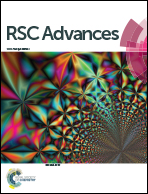Strengthening of liquid crystal photoalignment on azo dye films: passivation by reactive mesogens
Abstract
Disazo dyes form a highly effective class of liquid crystal (LC) photo-aligning materials whose molecules undergo fast orientation or reorientation under exceptionally low irradiation doses. These properties make these materials irreplaceable for application in all-optical LC devices. At the same time, the high sensitivity of the photo-orientation prevents the extension of this method to electro-optical elements such as LC displays and photonic devices. To stabilize LC alignment on dye films, several approaches have been developed which employ reactive mesogens (RMs) capable of photopolymerization. This article comprehensively describes the approach associated with the passivation of photoaligning films by thin layers of RMs. It is shown that continuous RM films with a thickness ≥5 nm provide highly uniform, thermally and photo-stable LC alignment. This approach also provides a VHR of more than 99%, RDC voltage less than 5 mV, and image sticking parameter about 1.002, which are the same as for rubbed polyimide films. Together with the low pre-tilt angle, high anchoring energy and ability of alignment patterning, this makes the proposed approach promising for application in a range of electro-optical devices, particularly those requiring active matrix driving and multi-domain alignment.


 Please wait while we load your content...
Please wait while we load your content...